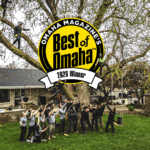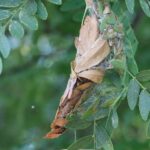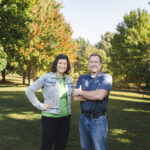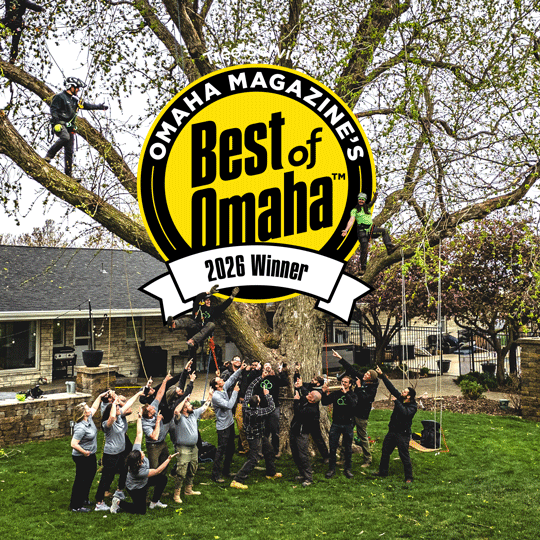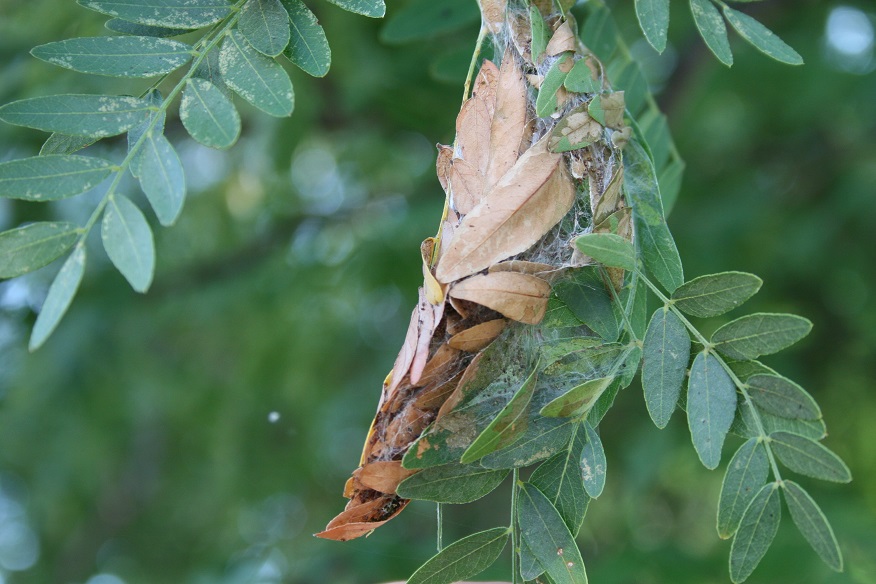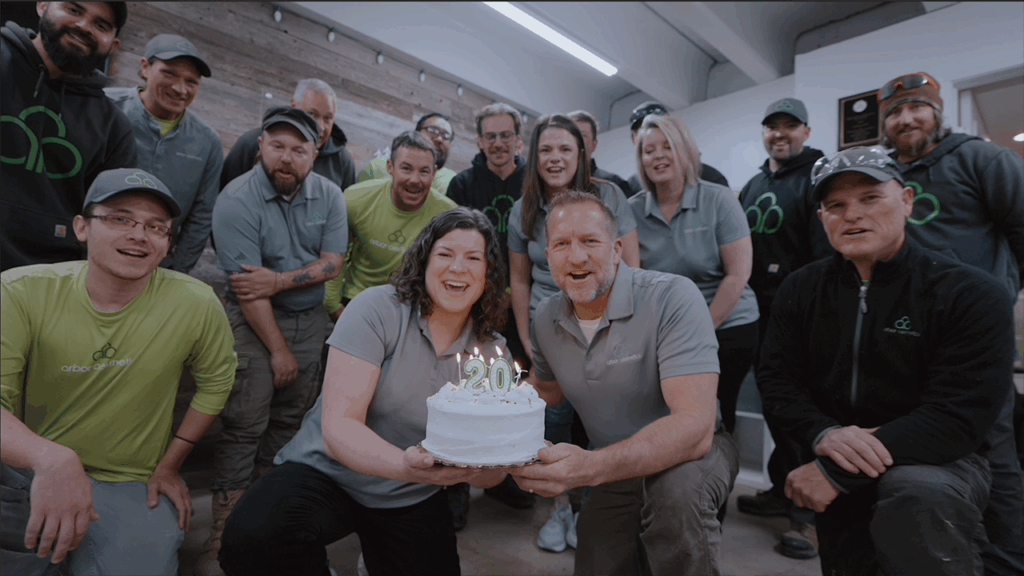Welcome, March! Spring is finally near, which means it’s a good time to think about tree planting. This blog post is Part 1 of a series of 3 posts that will help guide you in planting a new tree this year! NOW is the time to start researching!
We recently had the pleasure of assisting a customer select a replacement tree after we removed one from their front yard. There were many factors we and the customer had to take consider before ultimately selecting a Ginkgo Biloba tree.
We recently had the pleasure of assisting a customer select a replacement tree after we removed one from their front yard. There were many factors we and the customer had to take consider before ultimately selecting a Ginkgo Biloba tree.

How did we decide on this tree? They were looking for a tree to plant near their driveway for shade, and a tree that would offer privacy for the house. The tree would have a somewhat limited canopy space later in its life because of other nearby mature trees and a power line. Ginkgos are heat tolerant, work well as street trees and are good for somewhat confined spaces. Lastly, the customer also loved the aesthetics of this tree and its gorgeous yellow fall color. Ginkgos are a great choice for southeastern Nebraska!
Eeny Meeny Miny Mo
Many times, deciding on which tree to plant is more complicated than, “Hey – that one’s pretty!” There are a number of factors that should be considered to responsibly select the “right tree for the right place.”
What is its purpose?
- Shade & Cooling – One of the best and most obvious uses of a tree! Trees not only cool by providing shade, but add moisture to the air through transpiration. Remember the sun’s rays will be different from spring to summer to fall. Plant for where you want the shadow during the hottest time of the year – and the time of day you desire the shade. (See illustration)
- Aesthetics – Use trees to create depth and visual appeal. Are you looking to add color? Height? Texture? Trees can really help frame a space and add a background to an empty lot. The US Forest Service suggests not placing a tree where it will split your lot or view into two equal halves.

- Privacy & Wind-breaking – Consider a low-branching conifer for hiding unsightly areas. Using a combination of densely planted conifer and deciduous trees provides the best protection from wind, dust, noise, light or nosy neighbors.
- Creating Boundaries – If you simply need to define the boundaries of your property, a small narrow-crowned tree will do the trick.
Size & Location
This is often the most overlooked factor when selecting a new tree. You’ll need to envision the planting site in 5, 10 or 20 years to consider the tree’s mature height, canopy spread and root space. Sure, you can prune the tree as it grows to keep it properly elevated over sidewalks, driveways or your home, but it’s best to select the right tree from the get-go so you won’t need to rely on pruning in the future. But hey – when you need that pruning, give us a call, won’t you?
Location considerations:
Location considerations:
- Power lines
- Existing trees
- Buildings, decks & gazebos
- Driveways, streets & sidewalks
- Space available for root spread (consider container/planter size or easement size between street and sidewalk)
Crown Shape
At the nursery, those young canopies all look the same! Ask for assistance or do your research so you know what canopy shape you’ll be dealing with when the tree matures. To the right, the US Forest Service illustrates common canopy shapes.


Environmental Factors
We cannot stress enough the importance of selecting a tree that is genetically inclined to thrive in our climate!
- Soil & Drainage – Is your soil sandy, clay-y (is that a word? I’m using it…) or a combination of both? Sandy soils will require more water, and clay-y soils will require less water (no more often than every 7 days in the summer). An easy method to determine the drainage of a site is to dig a 12x12x12 hole in the planting site. Fill the hole with water. If the water drains in fewer than three hours, the drainage is excellent, and plants suited for dry locations will perform well. However, this method should be done only when the soil is already moist or the test will yield false results.
Also consider that high traffic areas generally yield compacted soil, which means poorer drainage.
Lastly, each tree species has a tolerance range related to acidity and alkalinity. If you’re unsure of your soil pH, you can have a simple and affordable soil test performed by Midwest Laboratories here in Omaha. - Pests & Diseases – Research common pests and diseases for the trees you’ve got your eye on, and consider their long term care requirements and the costs and effects of repeated pest or disease treatments. You might consider a disease-resistant variety, like the Valley Forge Elm which is resistant to Dutch Elm Disease (vs. American Elm). Some trees are naturally resistant to most pests, like Ginkgo, Bur Oak and Goldenrain Tree.
- Climate & Hardiness Zones – Omaha, Nebraska is in Hardiness Zones 5-6. Click the button for a comprehensive list of trees suggested for our hardiness zones from Arbor Day:
- Light – “Shade tolerance is the term foresters use to rate the light requirements of each species. Some species, like white birch or most pines, require full sunlight. They are shade intolerant. Tolerant species, like most maples, hemlocks, and lindens can do well in shade. Others, like white oak, are somewhere in between and are referred to as having intermediate tolerance. Don’t make the mistake of planting your tree where it is mismatched with its need for light.” – US Forest Service
Good Trees for POOR Drainage:
- Bur Oak
- River Birch
- Red Maple
- Sweetgum
- PawPaw
- Hornbeam / Ironwood
- Sycamore
- Bald-cypress
- Red Oak
- Ginkgo
- Bur Oak
- Japanese Tree Lilac
- Sassafras
- American Yellowwood
- London Plane Tree
- Ohio Buckeye
- Amur Maple
- PawPaw
- Hackberry

Fruit, Flowers & Foliage
The truth is, every tree flowers and fruits to some degree. The planting site of your tree and your own personal tolerance for “tree litter” will help you determine what kinds of trees to avoid. Some people have a lower tolerance for “messy trees,” and some of the following examples may not bother you at all! At any rate, here are a few examples:
- A Bur Oak will drop large acorns, so you may not want to plant over your driveway or street.
- Crabapples, female Ginkgos and Walnuts produce messy fruit that you may not want to scrape off your sidewalk or driveway (or the bottoms of your shoes!) These trees may be better to plant over a grassy or mulched area.
- Lindens, tulip trees and maples produce samaras (Helicopters? Whirly-gigs?) that may clog gutters.
- Kentucky Coffee Trees and Catalpas produce large seed pods that you may need to rake up periodically if you prefer a clean and tidy lawn.






Whew! That’s a lot to consider!
So it’s time to do some research. Please feel free to reach out to us if you need some suggestions or insight from a Certified Arborist!
